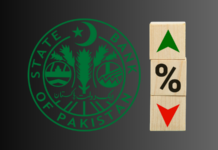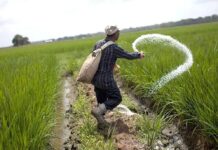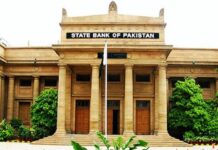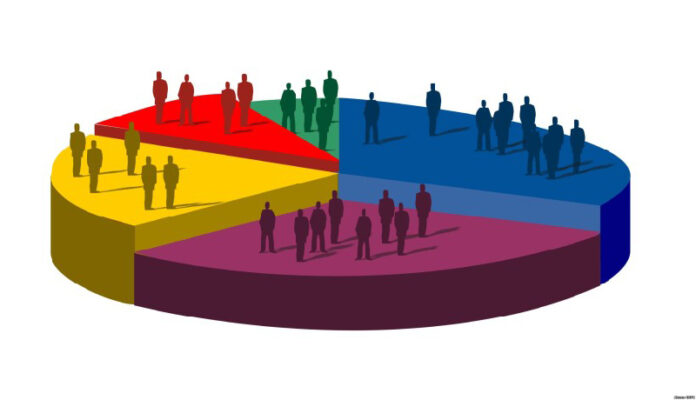ISLAMABAD: Mouzas in Pakistan have declined to 49,384 from 52376 in the last 12 years.
As per details, Pakistan Bureau of Statistics (PBS) has revealed in its Mouza Census 2020 that there are 49,384 mouzas all over Pakistan as compared to 52,376 in 2008.
Of these, 87 percent are rural and the remaining are either forest, unpopulated, partly urban or urbanized whereas the total rural populated mouzas in the country are 44,576 which total 90 percent.
In addition, in rural areas within provinces and the federal capital, highest cultivated land is in Punjab with 75 percent while lowest is in Sindh with 32 percent.
Similarly, highest non-cultivated land is in Sindh with 32 percent followed by Khyber Pakhtunkhwa (KP) with 35 percent. However, the federal capital has the highest percentage of rural land which is populated with 12 percent as compared to other Provinces.
The report mentioned that the major crops cultivated in rural areas of Pakistan are wheat, rice, cotton, sugar cane and maize and it is found that cultivation of Wheat seems common in more than 93 percent of rural areas and percentage of areas where sugarcane is cultivated has declined
The sugar cane cultivation areas in Pakistan have declined from 14,515 to 17,002 in 12 years.
The wheat cultivation has also declined from 43,700 to 41,165, Rice 19530 to 19454, cotton 15,748 to 15074, whereas maize cultivation areas have been increased to 22180 from 22045.
The second major crop varied in provinces, in Punjab it is rice with 66 percent, whereas in KP it is Maize with 82 percent areas reporting its cultivation. Cotton is the second major crop cultivated in Sindh & Balochistan. Cultivation of sugarcane is highest in Punjab with 48 percent followed by Sindh with 44 percent; however, its cultivation is lowest in Balochistan with only 2 percent of areas reporting it.
It is pertinent to mention that in the federal capital, only wheat and maize are reported as major cultivated crops.
Traditional Irrigation Sources
Tube wells are the major source of irrigation through which the majority of rural areas have been cultivated partially or whole in Pakistan. 52 percent of the areas have reported tube wells as a source of irrigation of land followed by canals with 49 percent; 28 percent of land is reported as arid; however, this pattern varies among provinces
Depth of Water Table
The majority of depth of underground water in majority of rural areas is up to 100 feet however there are stark differences in provinces, where in Punjab & Sindh more than 75 percent rural areas have depth of underground water is up to 100 feet, however, in KP and Balochistan majority rural areas have water depth of 101 feet.
Type of Housing Structures
In rural Pakistan still majority of houses built are Semi Pacca, however, the number of semi-pakka houses are decreasing and bricked houses are increasing. Moreover, one third of the houses are made of mud but this varyes among provinces.
It is observed that the material used for housing structures have wide variations among provinces. Majority of housing structures in Punjab & Federal Capital are bricked with 59 & 87 percent respectively, while in Sindh & Khyber Pakhtunkhwa majority are Semi Pacca with 75 and 50 percent respectively. However, in Balochistan majority of housing structures i.e. 75 percent are mud made.
Type of Streets in Rural Areas
The majority, about 54 percent, of streets in rural areas in Pakistan are kacchi, while 17 percent are metaled streets, depicting the need for work on enhancement of streets in rural areas.
This situation is worrisome among provinces as the majority of streets in rural areas are still dirt/ Kacchi and this percentage is highest in Balochistan with 91 percent, followed by Sindh with 78 percent and Khyber Pakhtunkhwa with 71 percent. Punjab has reported the highest percentage of bricked streets with 36 percent but still one third of streets are kacchi.
Toilet Facilities
It is observed that now the majority i.e. 74 percent of rural areas of rural Pakistan have toilets inside houses as compared to 2008 where only 42 percent of areas have toilets inside houses. There are large variations within provinces, Punjab has the highest percentage of areas with indoor toilets, while still 74 percent of rural areas in Balochistan do not have facilities of toilets inside houses. Toilets inside houses are universal in rural areas of Islamabad.
Sewerage System in Rural Areas
Majority of rural areas of Pakistan do not have concrete/ paved drains i.e. 59 percent and there is no improvement in the situation since 2008. However, the percentages of mouzas where mostly there are concrete/paved drains have been improved from 5 percent to 10 percent.
Health Facilities
Provision of Health Facilities for the rural population is a very important aspect as still 64 percent population is living in rural areas of Pakistan. It is found that from 10 to 12 percent of rural areas have facilities like Hospital/dispensary, Basis Health Unit (BHU), and Rural Health Centers (RHC) etc. inside the Mouzas.
It is worth mentioning here that the population of rural areas have to travel long distances to reach the health facilities, however, average distances have reduced as compared to 2008. On average the smallest distance is 13 km to reach BHU and 16 Km to reach RHC & Hospitals, while the largest distance on average is 23 km to reach NGO dispensary, depicting need for constructing better and affordable health facilities for rural areas in proximity.

























